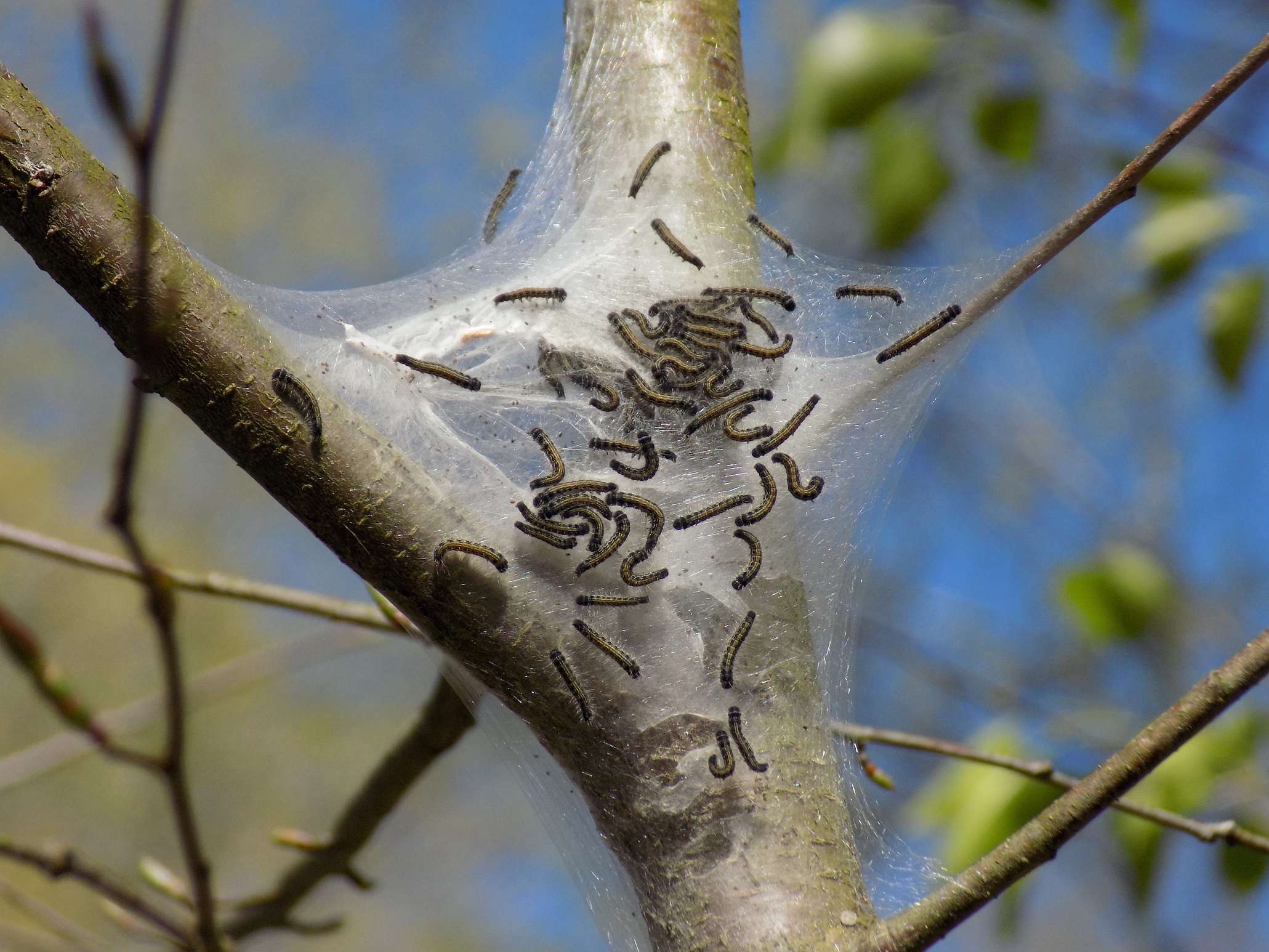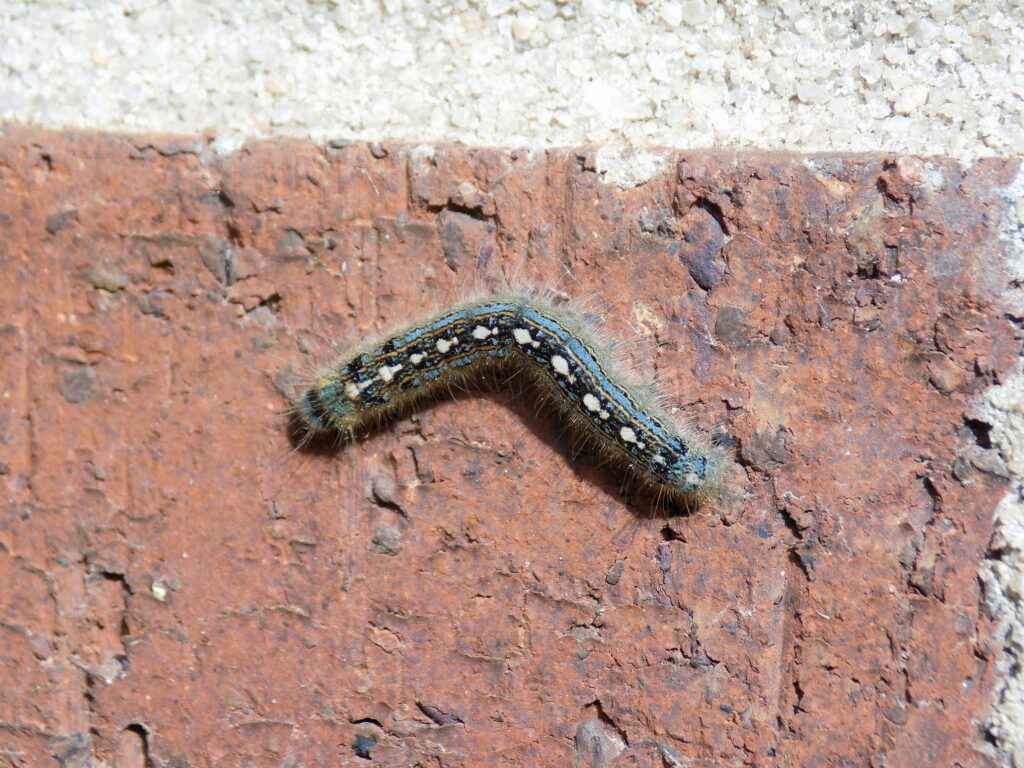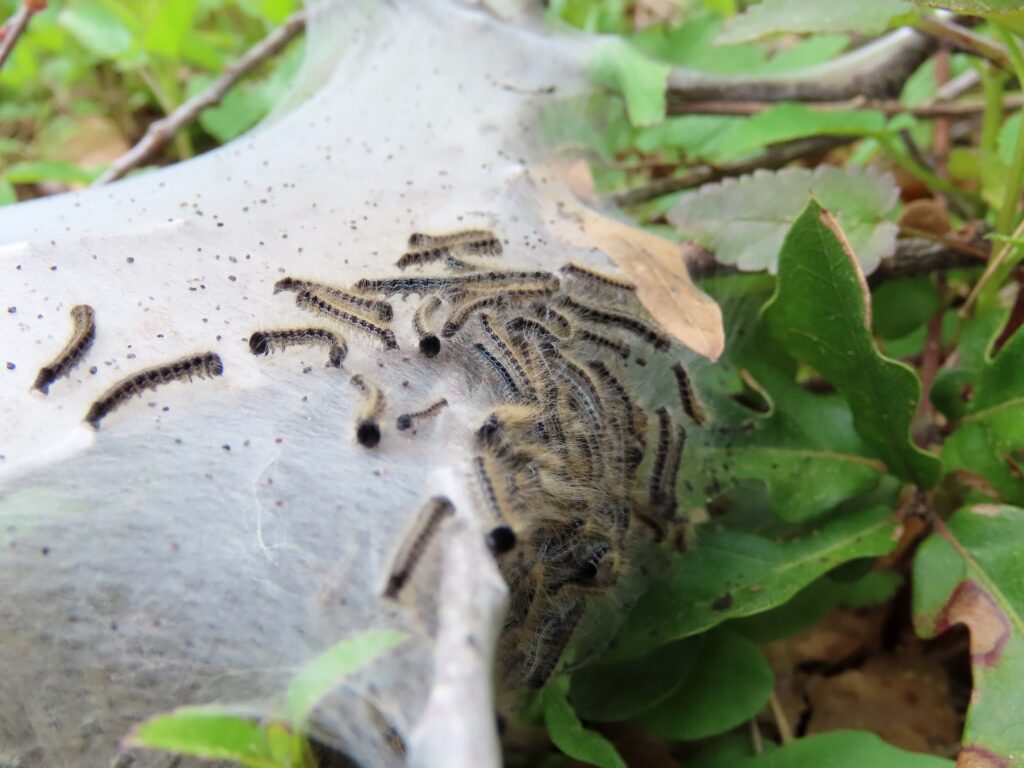



This week for Flora and Fauna Friday, we have another little bug with a bad rap. This week we’re talking about Tent Caterpillar Moths (Malacosoma spp.), or what’s commonly known as Tentworms.
There are two species of Tent Caterpillar Moth in SC, the Eastern Tent Caterpillar Moth (M. americana) and the Forest Tent Caterpillar Moth (M. disstria). The two species are easy to tell apart. Eastern Tent Caterpillars build tents, their caterpillars have a solid white stripe down their back, and the Moths have white stripes on their wings. Forest Tent Caterpillars don’t build tents, their caterpillars have white spots down the back, and the Moths have dark lines on their wings. However, both species have similar life histories. In summer, adult moths deposit eggs in dense masses surrounding a small hardwood tree branch. These eggs masses turn dark and shiny as the eggs overwinter. The following spring, caterpillars emerge and begin to feed on leaves. Caterpillars of both species live in colonies but in a different way. Eastern Tent Caterpillars form a tent where the caterpillars can rest and molt, protected from predatory insects and birds. Forest Tent Caterpillars forgo the tent and form a silk mat lower down on the tree’s trunk or larger branches. This mat affords little protection but, being deep in the canopy, is much less visible and obvious to predators. By midsummer, the caterpillars have finished growing and descend from the trees en masse to pupate. The caterpillars eventually find a place to pupate and spin a silken cocoon. In a few weeks an adult moth will emerge, reproduce, and die. Restarting the cycle.
Eastern Tent Caterpillars are the species with the bad rap. A lot of people find their large silk tents and the leafless branches they leave behind unsightly. Many believe their eating habits are harmful to the host tree but that’s really not the case. Tent Caterpillar damage is superficial and they are no more harmful to the tree than a seasonal pruning. In fact, most trees typically regrow any lost leaves before the end of the summer. However, the Eastern Tent Caterpillar does have a preference for Cherries, Apples, and Peaches, where excessive leaf damage can reduce yields. Despite any perceived slight to human aesthetic preferences, Tent Caterpillars are an important link in the food chain. They are a prolific herbivorous insect, making them a large part of the diet of many wasps, lizards, and birds in the summer. In fact, they’re the primary food source of our Yellow-billed Cuckoo in summer. Cuckoo’s use their long, stout beak to reach into their tents and pluck out the larva inside.